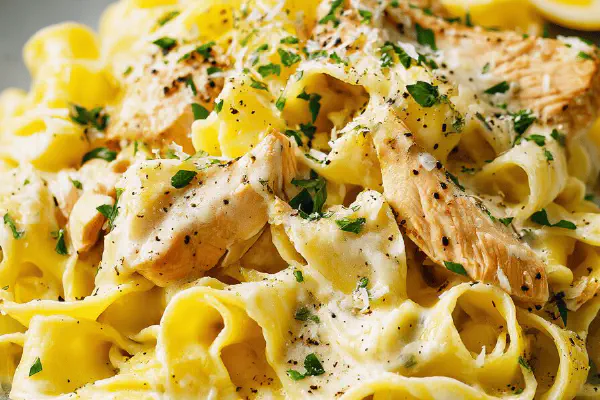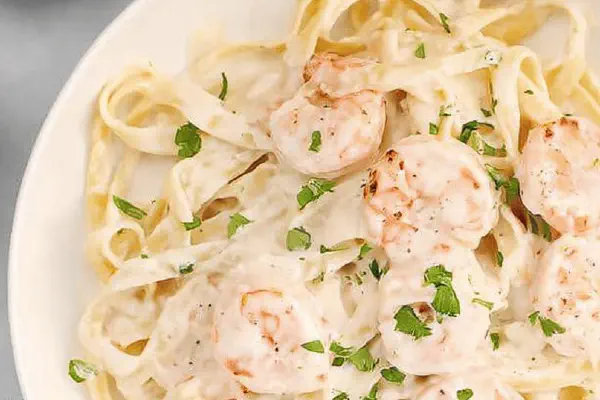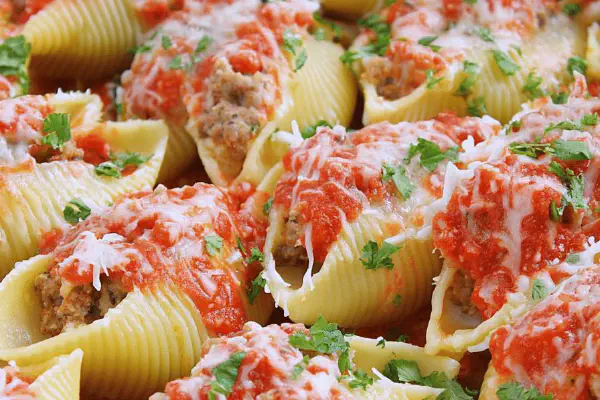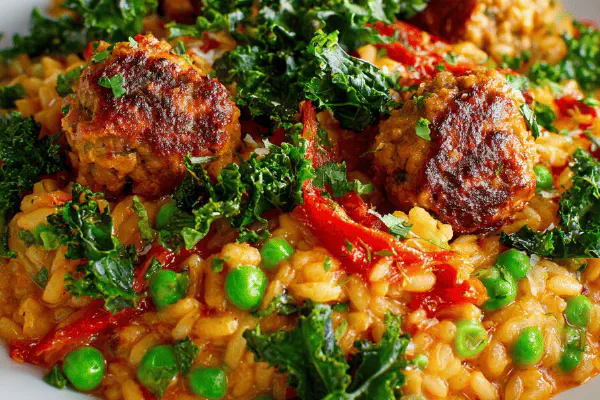Featured Recipe
Creamy Shrimp Pasta
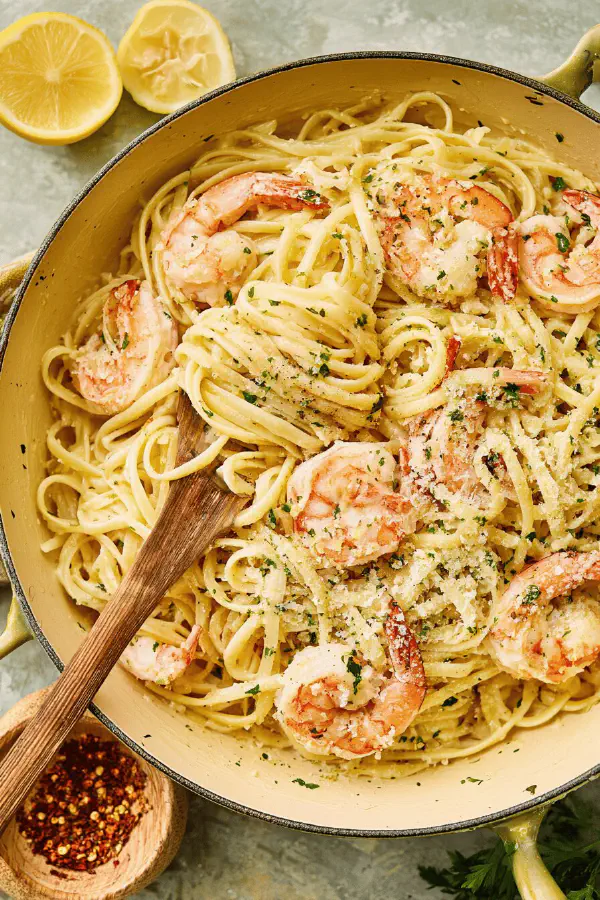
By Kate
"
Linguine tossed in a buttery garlic lemon sauce with sautéed shrimp and creamy Alfredo for richness. Salted water bubbles as pasta cooks until just tender, then set aside coated lightly with oil to prevent clumps. Shallots sweating in butter and olive oil release a gentle sweetness, garlic and chili flakes wake the pan instantly. White wine and lemon juice bring some acid. Shrimp goes in last—fresh or thawed—cooking until that translucent edge starts to fade, not longer. Parsley and Parmesan finish. A dependable, elevated weeknight hit with a slight herbal lift and a kick.
"
Prep:
15 min
Cook:
18 min
Total:
33 min
Serves:
4 servings
pasta
shrimp
dinner
Italian
comfort food
Introduction
Midnight hungry? Came home tired, no time to mess around. Pasta boiling furiously while you dice shallots. Sharp lemon hits the pan late, cutting through buttery richness that clings to tender shrimp. Garlic and paprika make it sing. This isn’t frou-frou fine dining—simple basics done right. Trust that perfect bite timing means no rubbery shrimp, no mushy starch. Keep it confident, taste-driven, and messy on the plate. No need to overthink. A splash of white wine or broth stands in if you forget the bottle, parsley brightens the whole thing. Easy but tastes like work went in.
Ingredients
About the ingredients
Butter and olive oil share stage—oil raises smoking point slightly; butter adds depth and gloss. You can sub half or all butter for ghee or margarine if dairy is an issue. Shallots add subtle sweetness over onions; swap if needed but adjust cooking time as onions take longer and are more pungent. Pepper flakes give a mild kick; smoked paprika adds warmth without heat if you want to dial down spice. White wine is traditional, but low-sodium chicken broth works fine, especially if cooking for family or kids. Alfredo sauce can be store-bought for speed or homemade for control, but keep thickness in mind. If sauce separates, whisk in a splash of cream or milk before adding shrimp.
Method
Technique Tips
Salting the pasta water is the foundation—like seasoning a steak before the pan. Taste the water; it should be salty enough to flavor the pasta but not overwhelming. Pasta timing can vary wildly by brand; always do a bite test. Toss hot drained pasta quickly with a drizzle of oil so it doesn’t clump; this makes life easier during plating. When sweating shallots, keep heat moderate. Snap of garlic should be garlic-scented, not burned or bitter. Add liquids once aromatics are soft to loosen the pan, lift fond bits for flavor—you want the sizzle to quiet to a gentle simmer. Shrimp cooks in minutes; watch color change and texture, stop cooking immediately or it turns chewy. Fold Parmesan and parsley in last off the heat for freshness and balanced saltiness. Combine pasta and sauce carefully to avoid mush or dryness—too thick adds heaviness, too thin loses body.
Chef's Notes
- 💡 Use fresh shrimp if possible; frozen is fine—just thaw under cold water first. Timing is key, watch for color changes. Liquid in pan cooks shrimp quickly. Don’t walk away.
- 💡 Salt your pasta water like sea water—it’s vital. Test the pasta—it should bite back. No mush. Drain but don’t rinse. Top with oil to avoid clumping. Quick toss.
- 💡 If sauce separates, don’t panic. Whisk in cream or broth—bring it back together. Sauces need liquid; adding splash can help. Make sure it coats, not pools.
- 💡 For added depth, swap shallots with onions but expect longer cook time. They brown faster, more pungent. Smoked paprika gives warmth without spice. Cut back on heat.
- 💡 Leftovers? Store in airtight container. Can dry out quickly; reheat on low with splash of broth. Toss gently, restore creaminess. Keep an eye to avoid overcooking.
Kitchen Wisdom
How long does shrimp take to cook?
Small shrimp, 3-4 minutes max. Watch for opaque, pink edges. Overcooked turns rubbery; it's fast. No more being side-tracked.
Can I use frozen shrimp?
Yes, just thaw under cold running water first. Adds time otherwise. Make sure they’re peeled, deveined to ease your cooking.
What to do if pasta’s overcooked?
It happens. Next time, test sooner. Under-cook slightly; can finish in sauce later. Sauces blend flavors well.
How to store leftovers?
Airtight container is key. Stays fresh a few days. Reheat gently; broth or cream will help prevent dryness. Watch texture.
